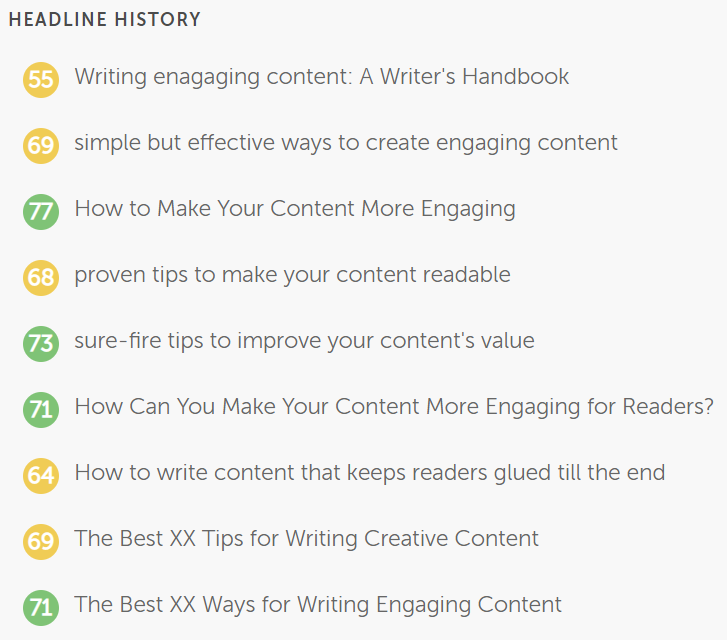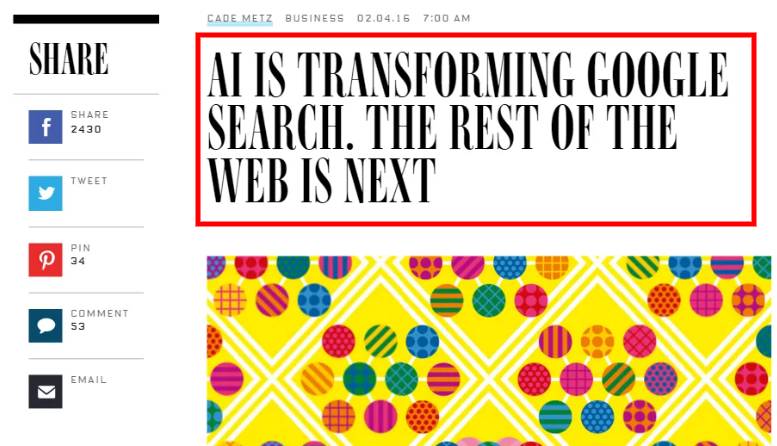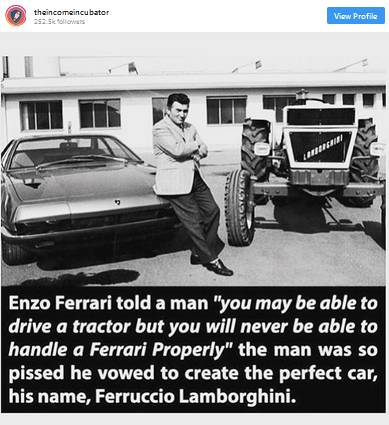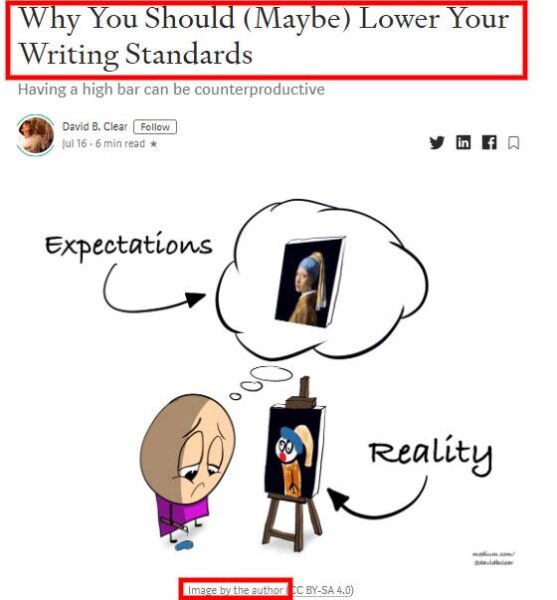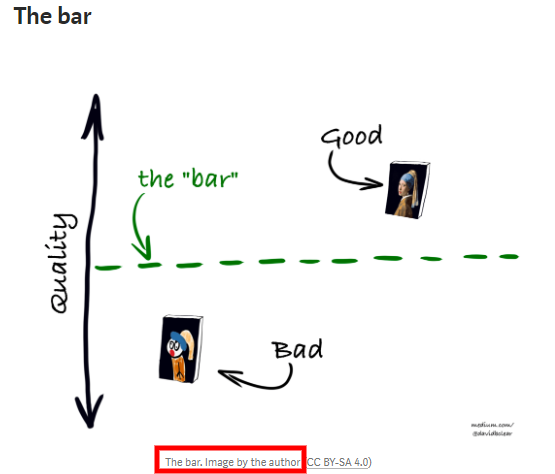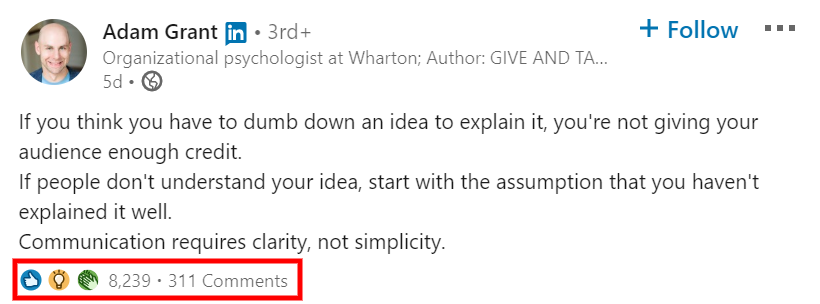I read a lot of content on a daily basis, mostly marketing content. And I’ve come to the sad realization that most of the content floating about these days is unengaging.
Sounds harsh, right?
I know, but it’s still true. I’ve got stats to support my POV.
In a survey of 1,000 bloggers, Orbit Media found that 54% of them found it hard to engage their readers.
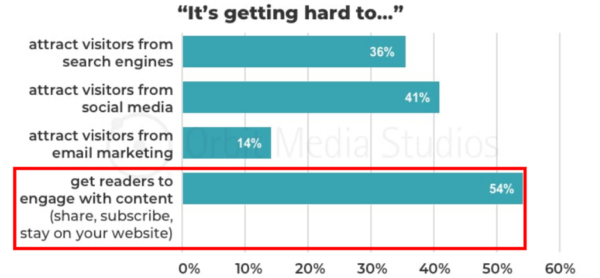
Image via Orbit Media
Furthermore, Moz analyzed 1 million articles and found that 75% of them got fewer than 39 reshares and zero backlinks. Surely, such content can’t be called “engaging.”
But, I can spot a silver lining to this dark cloud.
Since most of the current content is sub-standard, you have an opportunity to shine if only you’re able to produce better quality content.
But how do you get started?
Just follow the hacks I’ve explained below. I can’t promise to sharpen your writing skills through one post. However, I can certainly help you create killer content that cuts through the noise and gets people talking.
Let’s dive in.
3 Simple Ways to Create Engaging Content
For modern businesses, content is a powerful tool. But you can’t generate leads, subscribers, or customers from content that isn’t well-crafted or engaging, even if you use the most effective content promotion strategies. To avoid that pitfall, implement these hacks:
1. Nail Those Headlines
It won’t be an exaggeration if I tell you to devote at least half of your article-writing time to crafting headlines.
But why?
Engagement starts with an enticing headline. When your content is competing with hundreds of similar articles in Google Search results, a compelling headline can be a game changer.
Even if your article topic is dry, an eye-catching headline can get it initial traction and views. Conversely, a boring headline can drive people away from stellar content.
A great headline does more than just entice readers. It:
- Provides context about the post content
- Fosters reader trust by delivering what it promises
- Attracts organic traffic (with keywords)
In essence, headlines can literally make or break your article. They are a key factor that governs whether people will check out your content or ignore it.
When it comes to giving advice, I always walk the talk. I wrote nearly 10 headline drafts before starting with this post. I ran them through CoSchedule, a headline analyzer tool that helps me write engaging content.
Image via CoSchedule
The tool scored each headline on a scale of 1 to 100, and I picked the headlines with the maximum score.
If you plan to compose headlines without the assistance of tools like CoSchedule, remember that a winning headline always satisfies the 4 Cs formula:
- Concise (Is it wordy or succinct?)
- Compelling (Does it evoke emotions?)
- Credible (Does the post deliver on its promise?)
- Clear (Does it unambiguously explain the post’s context?)
Need an example of a winning headline?
Image via Wired
This headline is a winner for many reasons:
- It hits on a trending topic (AI).
- It connects AI to Google Search, a popular and relatable tool.
- It feeds on the reader’s insecurity by implying that AI can somehow impact them on a personal level.
Is there a catch?
Absolutely.
While trying to catch reader attention, don’t resort to clickbait headlines. These headlines are melodramatic and provocative, but sometimes they just don’t match the post copy. They are used to manipulate people to click on the post.
Take a look at this clickbait headline:
Image via Medium
It piques curiosity because you want to see why number 8 is a killer. Luckily, this headline matches the post intent, but it’s not always so. A mismatch between headlines and post content can be frustrating for readers and dent the publisher’s credibility in a big way.
2. Leverage Storytelling
Humans are hard-wired for stories. They respond to stories better than to dry, boring facts. That’s why seasoned copywriters excel at storytelling, and you must too.
When you weave a strong narrative, readers remember it.
The Lamborghini-Ferrari rivalry has intrigued car lovers for ages. But when the brands decided to put a storytelling twist to it, their engagement rates spiked.
Image via Pinterest
When crafting content, keep the tone personal and conversational. First-person accounts stand out for their authenticity. So, don’t hesitate to use personal pronouns like “I/my/mine/myself.”
Here’s an example (and a pro tip):
When I started writing, I was in the habit of overusing passive voice. It made my writing less impactful – something that I realized after using editing tools like ProWritingAid. Gradually, I shook off the habit, but it took many failed content pieces to do so.
So, write like a human and for humans. Articulate your thoughts in simple language so that there’s no miscommunication.
3. Be Original
Tons of content is published every minute, online and offline. A lot of it is refurbished, which isn’t necessarily bad. In fact, curating content can save you a lot of time and effort, without compromising on quality standards.
But, you can’t always regurgitate existing content in order to replicate its success.
Why so?
Because modern consumers have low tolerance thresholds. They have no patience to go through content they’ve seen a million times before. Since you have seconds to make an impression, it’s best to put out original content.
There’s one more advantage of being original. You can earn trust and credibility, which is way more valuable than mere views and clicks. Additionally, you can increase your brand loyalty by promoting user-generated content.
I understand that innovating storylines from scratch can be time consuming, especially when you need to create content at scale. But it has several advantages as well.
Like what?
Original Content Sets You Apart from the Competition
If you ditch the herd mentality and dare to be different, you can definitely make an impact on your audience.
Take this Writing Cooperative article for instance. In it, the author presents a contrarian perspective that we shouldn’t strive to reach higher in life.
Surprising, right?
Indeed, but the copy is hard-hitting and persuasive. What makes it even more compelling is that the writer uses personal observations to support his point.
Image via Writing Cooperative
Plus, he creates hand-drawn sketches that look eclectic, but convey the point perfectly.
As a result, readers walk away feeling satisfied with the value they get from the article.
So, don’t shy away from discussing debatable topics. To portray your point strongly, create original infographics, cite case studies, and dig into proprietary research. Just don’t tread the beaten path if you want your content to stand out from the crowd.
Original Content Can Boost Your Personal Brand
If your content is unique and well-founded, you can grow yourself as a thought leader. People are always looking for inspiring figures to follow and patronize.
Don’t believe me?
Wharton psychologist, Adam Grant, is an opinion leader and influencer at LinkedIn. He grew his popularity and engagement solely on the dint of original content. His unconventional views have found a wide fanbase on the platform.
Image via LinkedIn
But, there’s a pitfall that you need to avoid at all costs. In your endeavor to be original, you may stray too far from the road. You may find yourself creating sensational content just to grab eyeballs. Like clickbait headlines, this can backfire massively. So, be sensible about the whole deal.
Conclusion
Your content won’t transform into a bestseller overnight. It will take a lot of practice and failed attempts to perfect the craft of writing engaging content. But the three tips I’ve explained above can certainly fast-track your efforts. Over time, great content will build your online authority and boost your conversion rates.
Do you need more advice on copywriting? Let me know in the comments. I’m always happy to help my readers.
